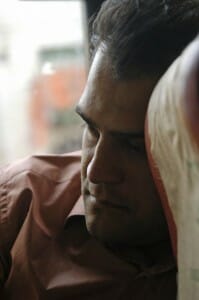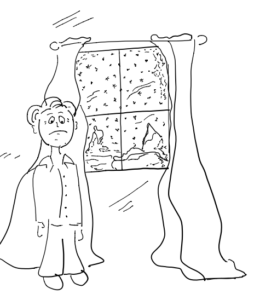Anxiety with Depression
Reconnecting to Life
Anxiety and depression often co-exist. The longer one condition goes untreated, the more likely the other condition will be present.
Many people believe that depression is the opposite of happiness. That’s not an accurate picture of this mood disorder. Depression is the opposite of connectedness. Depression is to disconnect as happiness is to connected. The leading intervention is a treatment called Behavioral Activation, which tailors inventions to awaken your senses and reconnect to daily life.
COMMON DEPRESSION TYPES:
First Episode, Episodic, Chronic Depression
First episode depression means that a person is experiencing his/her “first episode” and has no history of depression. We highly encourage treatment. Please don’t wait it out and hope for the best. We advocate working toward recovery if low mood exists daily, for more than two weeks.
Episodic depression describes depressive episodes that come and go. Persistent depression has more of a chronic pattern, and all three are common medical conditions.
People living with depression often feel trapped in negative cycles that make it difficult to function on a daily basis. Energy levels are often experienced as depleted and exhausted. People often describe feeling like they have to go through the motions to hide their true feelings from others. A negative or pessimistic view of the future is usually present, as well as a belief that there is not a reasonable answer to problems.
A person struggling with clinical depression is likely to believe they have a clearer view of reality and others are living a false version of reality. This belief stems from a release of attachment to relationships and the daily world. People often struggle to clearly identify and shift unhelpful thinking and coping patterns.
A Major Depressive Disorder (MDD) episode lasts longer than two weeks and includes 5 of the following symptoms:
• Persistent sad or apathetic mood
• Feelings of pessimism or low levels of hope for improvement
• Feelings of guilt, worthlessness, and/or helplessness
• Loss of interest or pleasure in hobbies and activities
• Decreased energy, fatigue, feeling slower than usual
• Difficulty concentrating, remembering, making decisions
• Insomnia, early-morning awakening, or the desire to oversleep
• Low appetite or overeating and weight gain
• Thoughts of death or suicide
• Restlessness and/or irritability with others
• Persistent physical symptoms that do not respond to treatment, such as headaches, digestive disorders, and pain for which no other cause can be diagnosed
What’s It Like to Live with Major Depressive Disorder?
People suffering from depression often feel torn between the two states. With depression, people often create safety bubbles where they feel some relief from depression symptoms. This may be in bed, reading, watching tv or movies, being with beloved animals, certain areas of their home or other avoidant coping strategies. This creates a dualistic pull between two worlds- the comfort zone and the other world. Unfortunately, this results in the worsening of depression symptoms. Much of life requires attachment to relationships, work, self-care, and duties (the other world). It is not uncommon for people to make poor decisions guided by major depressive thinking patterns, such as leaving a relationship or job to avoid attachment.
Situational sadness (often referred to as “depression” by many people) is not Major Depressive Disorder. It often is triggered by a situational stressor that requires a call to action. A person will not meet the criteria for MDD and/or symptoms may only last a few days, episodically. Medication treatment is not recommended for situational sadness or mild MDD.
Another Type of Depression:
Depression with a Seasonal Pattern
Some people are sensitive to shifts in the seasons and environmental light changes. A condition called Seasonal Affective Disorder (SAD) is a type of depression that occurs seasonally. A person can experience the condition in cold or warm weather climates.
In North Dakota and Minnesota, most people experience the condition during winter months. In order to meet the diagnostic criteria for SAD, an individual has to have experienced depression during the last two winters (usually, but can occur in summer as well) and begins to feel better in the spring and summer.
What Is It Like to Live with SAD?
Many people report that mood begins to drop in the late fall as they feel winter coming. Once the long, dark days of winter are present, depression symptoms usually are settled-in and people report low energy and light-seeking desires.
Many people report increased cravings for sugar and carbs as the body attempts to balance serotonin levels. Testing thyroid levels is often recommended as hypothyroid symptoms are similar to SAD.
If a person is already struggling with depression, before seasonal depression onset, this can feel like a double-dose of low mood and tanked energy levels.
Get Help
The treatment for SAD is usually a specific handful of behavioral changes, including light therapy. Because energy levels are low, it is easier to make these changes when a person is working with a health partner.
Of course, if depression is already a concern, please reach out to a mental health counselor now- do not wait for winter. Worsening depression symptoms is a serious medical condition and quality of life issue.
Struggling with low mood? Please request the right provider for you:
Kama Jensen (anxiety conditions with low mood)
⫸⫸⫸ Social anxiety often co-exists with depression.


